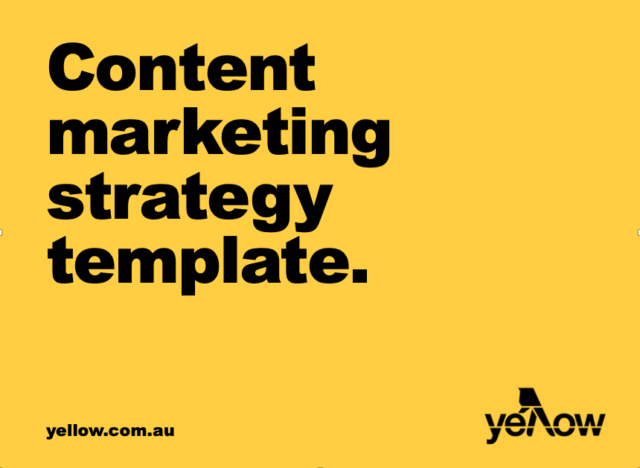Content is as essential to a website as coffee is to a morning.
And, while many business owners are putting in the work and creating content – from blog posts to videos to podcasts and infographics – what if no one is engaging with it?
Here are seven reasons why that might be.
1. The writing needs work.
You could have the most fascinating information in the world, but if it’s poorly written, readers won’t get far.
Website Planet, a resource for web developers and internet marketers, conducted a study testing two similar landing pages – one with perfect spelling and grammar, the other with several errors.
The study found that the landing page with errors had an 85% higher bounce rate (the percentage of people who leave the website without visiting any other pages) compared to the error-free landing page. This just goes to show that accuracy and clarity are critical to making a good first impression and keeping readers on your website.
Well-written content shows your readers that you are professional, detail oriented and that you care enough to get the details right.
If you’re not confident in your own writing abilities, consider investing in a solid copywriter who can make your words sing on the page.
2. The formatting is difficult to read.
Posting content with long walls of text, unclear fonts or text in hard-to-read colours can be extremely frustrating for readers and can quickly turn away potential customers.
As a general rule, content should be easy to skim and read through on any device. Break up your content into easily-digestible sections by keeping paragraphs short, using subheadings, bullet points and space between paragraphs, and adding visual appeal with embedded images and videos.
3. It’s not the right content for your audience.
Remember that what you’re passionate about isn’t always what your audience wants to read. Don’t write content just because you find it interesting. Instead, put yourself in your readers’ shoes.
What are their pain points? What do they often ask about in relation to your products or services? What information can you share with them that would make their lives easier?
If you have Google Analytics or a content management system that gives you data about your content – such as views, clicks and time spent on page – keep an eye on what sticks and what doesn’t, refining your content strategy as you go.
RELATED: eBook: The ultimate guide to content marketing for small businesses.
4. You aren’t creating enough content.
How often are you posting? If it’s only once a month or less, it probably isn’t enough.
Many companies will aim for a new post two to three times per week, while the real big hitters will go for a couple of pieces of content a day. For a small business, once every week or so is a reasonable goal to keep your readers consistently interested and engaged.
Plus, regular posting can help with your SEO, which is always a win.
RELATED: Google’s Helpful Content Update: Its impact on SEO and content marketing strategies.
5. Lack of paid promotion.
You might have the best blog on the internet, but without an amplification strategy, how will anyone know it exists?
Simply posting your content to Facebook or Instagram won’t get as much engagement as you’d like unless you already have a significant following on social media. Even if you do, the unfortunate reality is that organic reach (the number of people who see your content through unpaid distribution) is steadily declining every year.
In most cases, it’s a good idea to consider putting some of your marketing spend behind paid promotion. This could be pay-per-click, display ads, paid social media promotion or a mix of all three. You don’t necessarily need a big budget to see results from paid promotion, making it a cost-effective way to ensure your content is reaching the right people rather than getting lost in the mix.
6. You’re pushing for sales too hard.
Almost half (42.7%) of all internet users use ad blockers. Nobody likes being sold to, and the internet is positively overflowing with people and brands trying to sell things.
If you’ve promised to share tips on how to grow your own herb garden at home, but spend the entire blog talking about your special fertiliser, it’s going to turn your readers away. Your first goal should be to establish your expertise and credibility – only after you’ve done this successfully can you expect people to be interested in making a purchase from you.
Instead of making a hard sell upfront in your copy, focus on providing value first and foremost while naturally incorporating links to landing pages or products and using clear calls-to-action in the side bars, as buttons throughout or at the end of your content.
7. Not optimised for mobile.
More people use their mobile phones to search than desktops or laptops, so optimising your website and content for mobile is essential.
Users should be able to easily browse your website, scroll through your content and engage with the content on their phones. If it loads too slowly, is too difficult to click the buttons or is formatted strangely, it’s likely that they will click away and not come back.
For example, your website should load quickly – just a one-second delay on mobile can negatively impact conversion rates by as much as 20%.
Not only is optimisation for mobile important for the user experience, it’s also a key factor in your SEO rankings. Google indexes your mobile website first, which means that it predominantly uses the mobile version of your website to determine where you end up in the search results.
If your site isn’t responsive and your content not optimised, now is the time to invest in a developer who can help you get up to speed.
Visit Yellow Pages’ Business Hub for more articles and free resources covering every aspect of digital marketing for small business.
